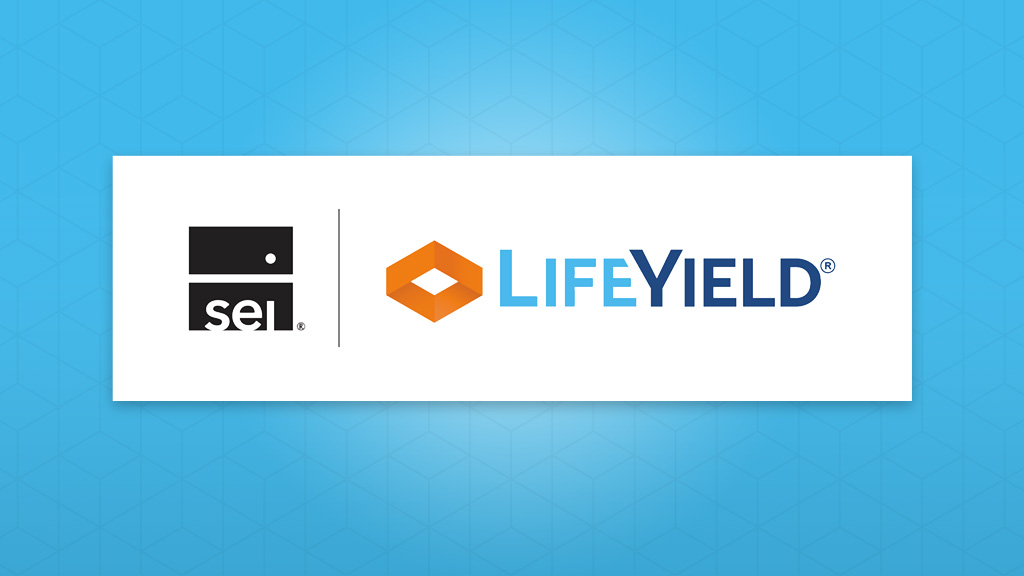Implementing Model Portfolios vs. Direct Indexing

As financial advisors navigate the complexities of approaches to model portfolios vs. direct indexing, we have to consider the impact they could have on our client’s portfolio performance and financial future. Understanding the contrasts between these methods could be the key to a more tailored and efficient investment path that benefits clients and firms better.
Next, we’ll talk about the differences between model portfolios and direct indexing and which one best aligns with your firm and your client’s unique investment objectives.
Model Portfolios
Model portfolios are pre-constructed investment strategies comprising a mix of asset classes designed to meet specific investment goals, risk tolerances, and time horizons. They are typically managed by financial advisors or robo-advisors.
Direct Indexing
Direct indexing involves purchasing all or part of the individual securities that make up an index rather than buying shares of a mutual fund or ETF that tracks the index. This allows for a high degree of customization and tax efficiency.
Rebalancing a Portfolio
When implementing a strategy utilizing either model portfolios or directing indexing, a systematic portfolio rebalancing approach enhances investment performance and aligns with long-term financial objectives. When considering rebalancing your portfolio, it’s essential to focus on maintaining the desired asset allocation to optimize returns.
Here are some points for advisors to consider with their clients:
- Maintaining Portfolio Allocation: Regular rebalancing ensures that your client’s portfolio stays aligned with their target asset allocation, helping manage risk and potential returns effectively.
- Tax-Efficient Strategies: Implementing tax-efficient rebalancing techniques can minimize tax liabilities, enhancing after-tax returns and overall portfolio growth.
- Optimizing Investment Decisions: By strategically rebalancing, you can make informed investment decisions based on your client’s financial goals and risk tolerance, ensuring their portfolio remains aligned with their objectives.
Rebalancing not only fine-tunes your portfolio’s asset mix but also plays a crucial role in optimizing tax efficiency and making sound investment choices. It’s a fundamental aspect of maintaining a healthy and well-performing portfolio over time.
Common metrics used during rebalancing
Understanding the differences between drift and tracking error is essential for maintaining portfolio performance and consistently aligning with investment objectives.
Drift
Drift is the gradual deviation of a portfolio’s actual asset allocation from its target allocation over time. This target allocation is typically a model portfolio. Drift occurs as market fluctuations cause the values of different asset classes to change at varying rates, disrupting the portfolio’s original balance. Drift can result from factors such as market volatility, changes in asset prices, or portfolio rebalancing delays.
Managing an investor’s drift aims to maintain their desired risk-return profile. Failure to address drift can lead to unintended exposure to specific asset classes, potentially increasing portfolio risk or reducing expected returns. Financial advisors employ strategies like regular rebalancing to mitigate drift and realign portfolios with target asset allocations.
Tracking Error
Tracking error measures the movement between a portfolio’s performance and its benchmark index. It quantifies the extent to which a portfolio’s returns deviate from those of its benchmark over a specific period. Tracking error can be influenced by factors such as differences in asset allocation, security selection, and portfolio management strategies. When using direct indexing, tracking error is an important metric to track to ensure that a client’s investments are kept in line with the index they are tracking.
While some level of tracking error is inevitable and may result from intentional deviations aimed at outperforming the benchmark, excessive tracking error can indicate inefficiencies or inconsistencies in portfolio management. Advisors strive to manage tracking error within acceptable limits to ensure that portfolio performance remains aligned with client expectations and investment objectives.
Managing Drift and Tracking Error:
Effectively managing drift and tracking error requires a disciplined and proactive approach to portfolio management.
Financial advisors employ various techniques to address these challenges, including:
- Regular Rebalancing: Implementing periodic portfolio rebalancing to realign asset allocations with target levels helps counteract drift and minimize tracking error.
- Asset Allocation Strategies: Optimizing portfolio diversification can mitigate drift and reduce tracking error by employing robust asset allocation strategies tailored to individual investor preferences and risk tolerances.
- Risk Management Practices: Implementing risk management practices such as diversification, hedging, and asset class selection can help mitigate the impact of market fluctuations on portfolio performance and reduce tracking errors.
- Performance Monitoring: Continuously monitoring portfolio performance relative to benchmarks and adjusting investment strategies as needed helps identify and address drift and tracking error in a timely manner.
By effectively managing drift and tracking error, investors can enhance portfolio stability, minimize downside risk, and improve the likelihood of achieving long-term investment goals when using both direct indexing and model portfolios. Tools like LifeYield can make drift management for firms that use model portfolios more effective and efficient than manually tracking drift or using direct indexing.
Direct Indexing vs. Model Portfolios
When comparing direct indexing and model portfolios, it’s essential to weigh the advantages and disadvantages of each approach to make informed decisions about your investment strategy.
Direct Indexing
Direct indexing involves creating a custom portfolio that mirrors an index by purchasing the individual securities that make up that index. This strategy allows for extensive customization and tax management. It’s a passive investment strategy suitable for those seeking market returns. By directly purchasing securities instead of ETFs or index funds, direct indexing allows for flexibility in which securities are purchased, so a client’s needs can be met while still reflecting the market. When rebalancing, Tracking Error is more likely to be used to measure against target thresholds.
Key Characteristics:
- Customization: Investors can exclude or overweight certain stocks based on personal preferences, ESG criteria, or other considerations.
- Tax Efficiency: Greater ability to perform tax-loss harvesting at the individual stock level to minimize tax liabilities.
- Control: Direct ownership and control over each individual security in the portfolio.
Advantages:
- Personalization: Highly customizable to meet specific investment goals, preferences, and constraints.
- Tax Management: Potentially more tax-efficient due to individual security-level tax-loss harvesting and other strategies.
- Flexibility: Investors can make adjustments to the portfolio based on personal values or market views.
Disadvantages:
- Complexity: Requires more active involvement and monitoring from the investor or the use of advanced tools and services.
- Higher Costs: May involve higher trading costs and management fees due to the need for a more sophisticated management approach.
- Higher Minimum Investments: Often requires a larger initial investment to effectively mirror the index while maintaining diversification.
Model Portfolios
Model portfolios offer a more personalized and active approach than direct indexing, allowing for customization based on individual goals, risk tolerance, and tax considerations. Model portfolios allow financial advisory firms to create their own models to offer to their clients, giving the firm a higher level of organization and allowing for more control over the holdings within the portfolio. Some firms create their own funds to incorporate into their models, enhancing their control over their investments to aim for a higher level of return for clients. When rebalancing, Drift is more likely to be used to measure against target thresholds.
While direct indexing might excel in cost-effectiveness and broad market exposure, model portfolios can offer enhanced personalization and tax efficiency. They can also be applied at a firm-wide level, aligning all financial advisors’ strategies while potentially investing in a firm’s own funds, allowing for a greater level of control over investments.
When a tool like LifeYield is used in conjunction with model portfolios, advisors can ensure that their clients’ portfolios do not suffer from excessive drift while making sure their holdings are as tax-efficient as possible and increasing their level of tax alpha.
Key Characteristics:
- Structure: Pre-constructed by financial advisors or investment firms based on particular investment strategies.
- Management: Actively managed and periodically rebalanced by the provider to maintain the desired asset allocation and to reflect changing market conditions.
- Standardization: Designed to fit a specific profile, such as growth, income, or balanced, but not tailored to individual investor preferences beyond the general profile.
Advantages:
- Professional Management: Investors benefit from the expertise of portfolio managers who select and manage the securities.
- Diversification: Typically well-diversified within the chosen strategy, reducing unsystematic risk.
- Simplicity: Easier for investors who prefer a more passive approach but still want direct ownership of individual securities.
Disadvantages:
- Limited Customization: Although holding individual securities, these portfolios are not specifically tailored to the individual’s personal preferences or constraints.
- Potentially Lower Tax Efficiency: The level of tax optimization may be less than with direct indexing, as the portfolio is managed for broad goals rather than individual tax situations.
When Should Advisors Use These Strategies?
Advisors can choose to use model portfolios or direct indexing depending on a client’s specific needs, risk tolerances, and concerns.
When comparing model portfolios with individual securities to direct indexing, the main differences are:
- Customization: Direct indexing offers a higher degree of customization, allowing investors to tailor their portfolios to their specific needs and preferences, while model portfolios follow a predefined strategy suitable for general investor profiles.
- Tax Efficiency: Direct indexing typically provides more opportunities for tax-loss harvesting and tax optimization at the individual security level, which is a different way of approaching tax efficiency than model portfolio implementation.
- Management Complexity: Direct indexing requires more active management and involvement from the investor or the use of sophisticated tools, whereas model portfolios offer a more hands-off approach with professional management.
- Control: Direct indexing gives investors greater control over their individual holdings and portfolio adjustments, whereas model portfolios are managed according to the provider’s strategy.
Choosing between these two approaches depends on the investor’s desire for customization and control versus a model portfolio’s convenience and management.
Using LifeYield with Model Portfolios
LifeYield, in conjunction with model portfolios, can help enhance and differentiate your firm’s capabilities. Consider the strategic advantages LifeYield’s tools can offer for optimizing your client’s portfolio’s performance and alignment with financial goals.
LifeYield offers tools for asset location and multi-account rebalancing, as well as tools to improve tax efficiency and optimize tax harvesting strategies. When implemented effectively, LifeYield’s technology can implement tax-efficient asset location strategies, particularly for clients facing high marginal income tax rates and expected future income growth.
Frequently Asked Questions
How does the implementation of model portfolios or direct indexing impact tax efficiency during transition periods?
Because of their tax efficiency implications, model portfolios and direct indexing are vital to consider during transition periods. A properly managed portfolio can benefit from model portfolios and direct indexing as a risk management, asset allocation, and tax efficiency strategy.
Are there specific considerations for incorporating Socially Responsible Investing (SRI) or Environmental, Social, and Governance (ESG) criteria into model portfolios or direct indexing strategies?
Incorporating socially responsible investing (SRI) or environmental, social, and governance (ESG) criteria into model portfolios or direct indexing strategies involves aligning investment goals with ethical considerations. Both model portfolios and direct indexing give advisors the tools and ability to build a portfolio that accurately reflects not only a client’s risk tolerance and financial goals but also their beliefs and values.
Balancing financial objectives and socially conscious values can be essential for portfolio customization. Advisors should discuss these topics with clients to gain a comprehensive understanding of their beliefs so that they can manage their portfolios effectively and ethically.
How do model portfolios and direct indexing strategies address the challenges of managing legacy assets or existing holdings within a client’s portfolio?
When managing legacy assets or existing holdings, consider tax implications, risk profiles, and alignment with goals. Assess asset location strategies for optimal tax efficiency. Customizing solutions based on unique circumstances can enhance portfolio performance. Tools like LifeYield can make this process more streamlined, accurate, and tax-efficient at an overall firm level.
Can Lifeyield’s technology be integrated with model portfolios to enhance tax efficiency and asset location strategies, and how does this partnership benefit both advisors and clients in optimizing investment outcomes?
Incorporate LifeYield’s technology with model portfolios to boost tax efficiency and optimize asset location. Through this partnership, advisors can save time on time-intensive tax management without sacrificing accuracy, freeing up time for more clients and allowing firms to grow their AUM and revenue. Clients can continue to enjoy growth and tax efficiency on their holdings.
Conclusion
Both model portfolios and direct indexing offer advantages for investors seeking to optimize their portfolios. Model portfolios provide simplicity and diversification, while direct indexing allows for more active management and customization.
Understanding the differences between these strategies and aligning them with your financial goals and risk tolerance can help maximize your investment potential. Consider utilizing tools like LifeYield to further enhance your portfolio management strategies.
Monthly insights from our Chief Growth Officer, Jack Sharry
Get exclusive insights and interviews from around the industry

 By
By 




